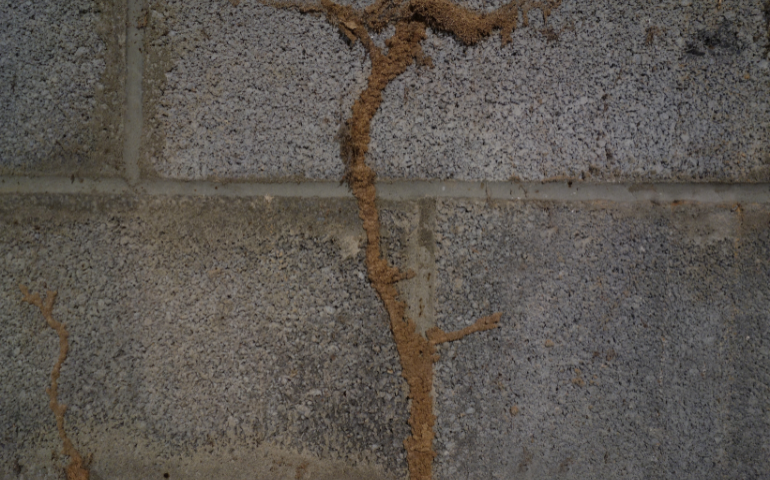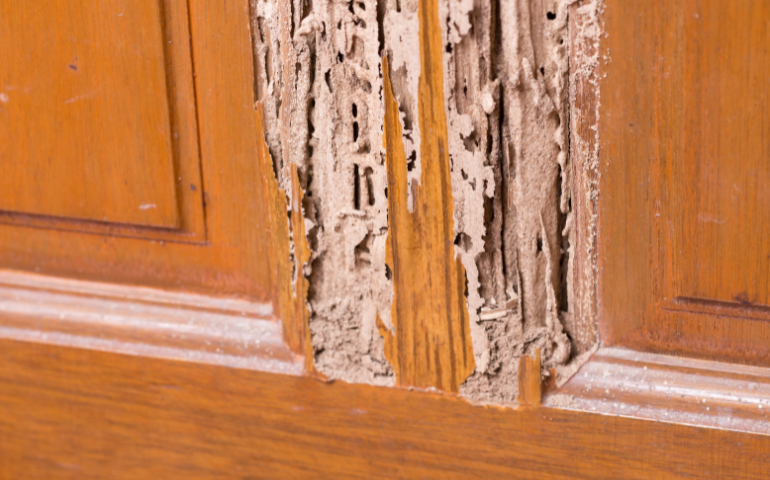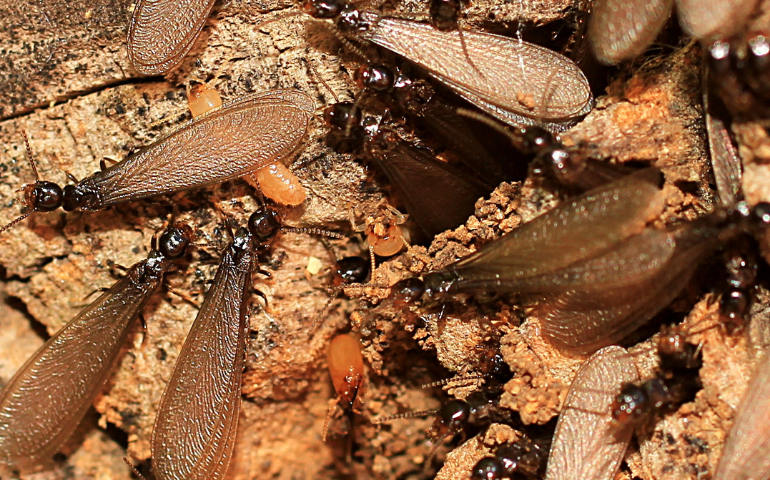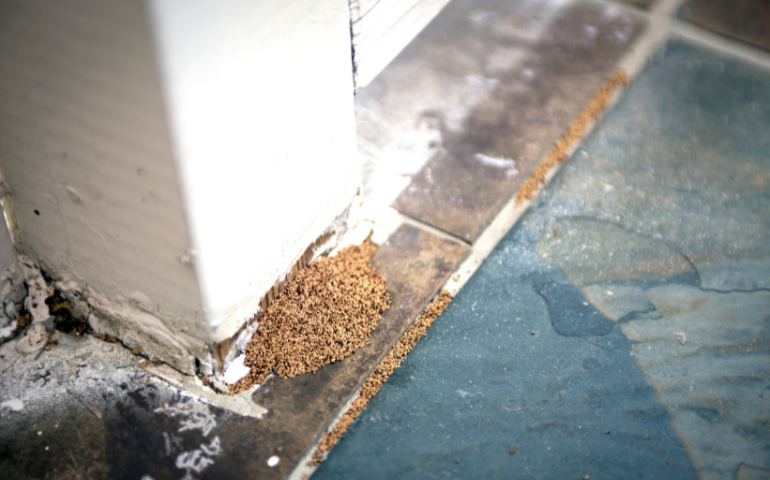Termites might be small, but the damage they cause is anything but. These silent destroyers can wreak havoc on your home, often going unnoticed until the damage is severe. Knowing how to spot the early signs of termites is crucial in protecting your property from costly repairs and structural issues.
We’ve seen firsthand how termites can compromise the integrity of a home. From hollow-sounding wood to mud tubes along your walls, these pests leave subtle clues behind. By identifying these warning signs early, you can take action before termites cause significant damage. Let’s explore the key indicators that termites may already be in your home.
Table of Contents
Common Signs Of Termites in Your Home
Detecting termites early can prevent extensive damage. Here are several common signs of a termite infestation.
Mud Tubes
Termites often build mud tubes as protective pathways. These pencil-thin tunnels, typically running along walls or foundations, connect their nests to their food sources. If found, these tubes indicate subterranean termite activity.

Hollowed Or Damaged Wood
Termites consume wood from the inside out, leaving a hollow sound when tapped. Damage often appears as blistering or weakened wood surfaces. Check baseboards, window frames, and beams for signs of degradation.

Discarded Wings
Termite swarmers shed their wings after finding a new nesting site. Piles of these small, translucent wings near windows, doors, or light sources suggest the presence of a colony nearby.

Termite Droppings (Frass)
Drywood termites leave behind frass, resembling small wood-colored pellets. These droppings often accumulate beneath wood surfaces or near infestations, signaling an active colony.

Visual Clues To Detect Termite Activity
Detecting termites early is crucial for preventing significant structural damages. Various visual signs can reveal their presence, allowing timely intervention. Below are key clues to watch for:
Cracked Or Bubbling Paint
Cracked or bubbling paint often signals hidden termite damage. Termites introduce moisture when tunneling through walls, which causes paint to blister, develop uneven textures, or peel in localized areas. Color variations or fading may also appear. If paint shows these issues without an obvious moisture source, further inspection is necessary.
Swarming Termites
Swarming termites, or alates, are unmistakable indicators of termite activity. They emerge during mating seasons and shed their wings after finding a new nesting location. Identifying them is straightforward:
- Wing Structure: Unlike ants, termites’ wings are equal in length.
- Antennae Shape: Termites’ antennae are straight; ants’ antennae are bent.
- Body Shape: Termites display a straight waist, while ants have a pinched waist.
Spotting swarmers or their discarded wings near windowsills or entry points strongly suggests an infestation.
Tight-Fitting Doors And Windows
Tight-fitting doors and windows can indicate termite activity. Moisture produced by termites when feeding on wood causes it to expand or warp, making doors and windows harder to open or close. If warped frames appear without recent water damage, termites could be to blame.
Hidden Signs Of Termite Infestations
Termite infestations are often hard to detect, as termites work behind walls, foundations, and flooring. Identifying subtle signs early can prevent extensive damage to your home.
Quiet Clicking Sounds
Termites create faint clicking sounds as worker termites move through tunnels and chew wood. These noises typically come from within walls or floors. Soldier termites may also bang their heads against surfaces to signal danger, producing a tapping sound. If such noises are noticed in a quiet room, inspection may reveal hidden infestations.
Unexplained Damage In Walls And Ceilings
Termites eat wood and other cellulose-based materials, leaving hollow spaces in their wake. This damage can lead to buckling wood, sagging ceilings, or unexplained cracks in walls. Paint may appear bubbled or cracked due to moisture from termite tunnels. Damaged drywall or wallpaper is another common sign in infested areas.
Faint Moldy Odors
Infested homes can develop mildew-like odors because termites introduce moisture while tunneling. This scent is often confined to specific areas where termite activity is concentrated. Coupled with other signs, these faint odors can indicate ongoing infestation requiring immediate attention.
Importance Of Early Detection
Detecting termite infestations early saves homeowners from costly structural repairs. Termites operate silently, often causing damage unnoticed for extended periods. Early intervention minimizes destruction and reduces repair expenses.
Signs like hollow-sounding wood and mud tubes serve as early warning indicators. Acting on these signs promptly disrupts termite activity before colonies expand. Flying termite swarms and discarded wings also hint at nearby infestations, especially during spring.
Unchecked infestations compromise structural integrity. Termites weaken wood foundations, walls, and support beams, leading to sagging ceilings or buckling floors. Identifying subtle signals, such as clicking sounds or moldy odors, prevents further deterioration.
Our team at Alta Pest Control emphasizes routine property inspections. Professional assessments uncover hidden termite activity in crawl spaces, behind walls, or within foundations. Early detection ensures effective treatment and safeguards your investment.
Noticing Signs of Termites? Contact Us ASAP
Termites are silent destroyers that can weaken your home’s structure and lower its value if left untreated. Recognizing early warning signs—like hollow-sounding wood, mud tubes, or discarded wings—allows for quick action to prevent costly damage.
Regular inspections and professional termites treatments are essential to keeping your home protected. We use the Sentricon® System, a proven solution for eliminating termites and preventing future infestations. If you suspect termite activity, don’t wait—contact us today for expert termite control!
Frequently Asked Questions
What are the early signs of a termite infestation?
Early signs of a termite infestation include hollow-sounding wood, mud tubes, discarded wings, termite droppings (frass), and cracked or bubbling paint. These indicators can help homeowners detect infestations before severe damage occurs.
Why do termites cause structural damage in homes?
Termites feed on wood and cellulose materials, compromising the structural integrity of homes over time. Their activity is often undetected, leading to extensive damage before being noticed.
What do termite droppings look like?
Termite droppings, also known as frass, look like small wood-colored pellets. These are often found near areas where termites feed or nest.
How can mud tubes help identify termite activity?
Mud tubes are protective tunnels termites use to travel between their colony and food source. These tubes are usually found along walls, foundations, or other wooden structures.
What do swarming termites indicate?
Swarming termites, or alates, are reproductive termites leaving the colony to form new ones. Their presence often indicates an established infestation nearby.
Can termites make noise?
Yes, termites produce faint clicking sounds. Worker termites make noise while tunneling, while soldier termites create sounds to signal danger.
What causes tight-fitting doors and windows during a termite infestation?
Termite activity introduces moisture, which can cause wooden structures to expand, leading to tight-fitting doors and windows.
Are moldy odors a sign of termites?
Yes, faint moldy odors can indicate termite activity since moisture from their tunnels often creates these smells.
How can regular inspections help prevent termite damage?
Routine inspections by professionals can detect hidden termite activity in walls, crawl spaces, or foundations, enabling early intervention and preventing costly repairs.
What are the benefits of early detection of termites?
Early detection minimizes structural damage, reduces repair costs, and protects the home’s integrity by addressing infestations before termites cause major issues.
Share article:
